Everdell Farshore is the cleaner, tidier sequel to our 2018 Game of the Year
Time flies, doesn’t it? I still sometimes think of Everdell as a brand new entry into board gaming, but it’s been over five years since we rated Everdell as our favourite game of the year 2018.
Five years is definitely long enough to learn a few lessons, and I think it’s fair to say that co-designers James A Wilson and Clarissa A Wilson have spent the time well in advance of releasing Everdell: Farshore, the first completely standalone sequel to Everdell.
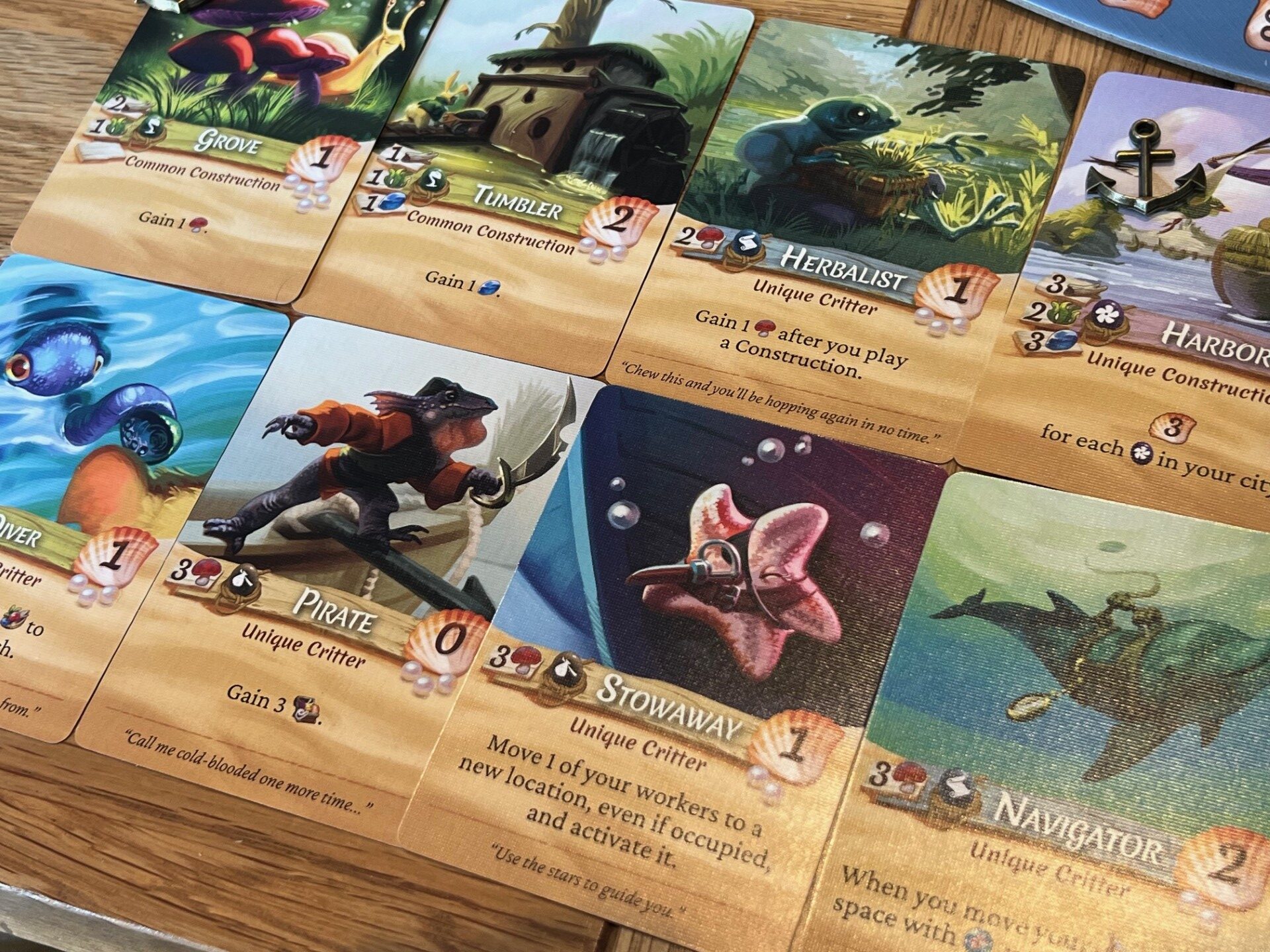
Farshore takes place on the distant shores of the Everdell universe, and if you want it there’s plenty of fluff in the manual to set the scene here. From a gameplay perspective, the action now takes place in an enclosed bay, and rather than the return of the gigantic evertree, we now have a cardboard lighthouse on which to place our unused animeeples for use in later rounds.
Much like the original, Farshore is a very high quality production, and many of the components are needlessly overproduced to maintain the unique sense of style, cuteness and tactility that the series has become known for. Farshore includes four kinds of cute animeeple, sculpted components in the form of wood, seaweed, gems, mushrooms, seashells and little metal anchors — all of which could be simple cardboard for about half the cost.

The cards are also of superb quality, both in terms of the material used and the printing finish, but also with respect to the artwork on them. Everdell was well known for its setting — with cute, expressive animals pictured against homely shelters and buildings that invoked Beatrix Potter and many other literary sources that feel familiar and welcome. Farshore is no different, with the shift from woodland (or dell, as it were) to seaside being completely seamless, and the new animals and locations feeling completely attached to the Everdell world.
In gameplay terms, Farshore is very much an evolution of Everdell, rather than a completely new game. For returning players, the main difference is probably the way in which the “occupation” of dwellings by a matching creature works. There’s no point going over old ground here, but what I will say is that Farshore targets simplicity in its ruleset, and I think it is a better, smoother game for it — albeit perhaps at the cost that it doesn’t have quite the same high level ceiling as Everdell does.
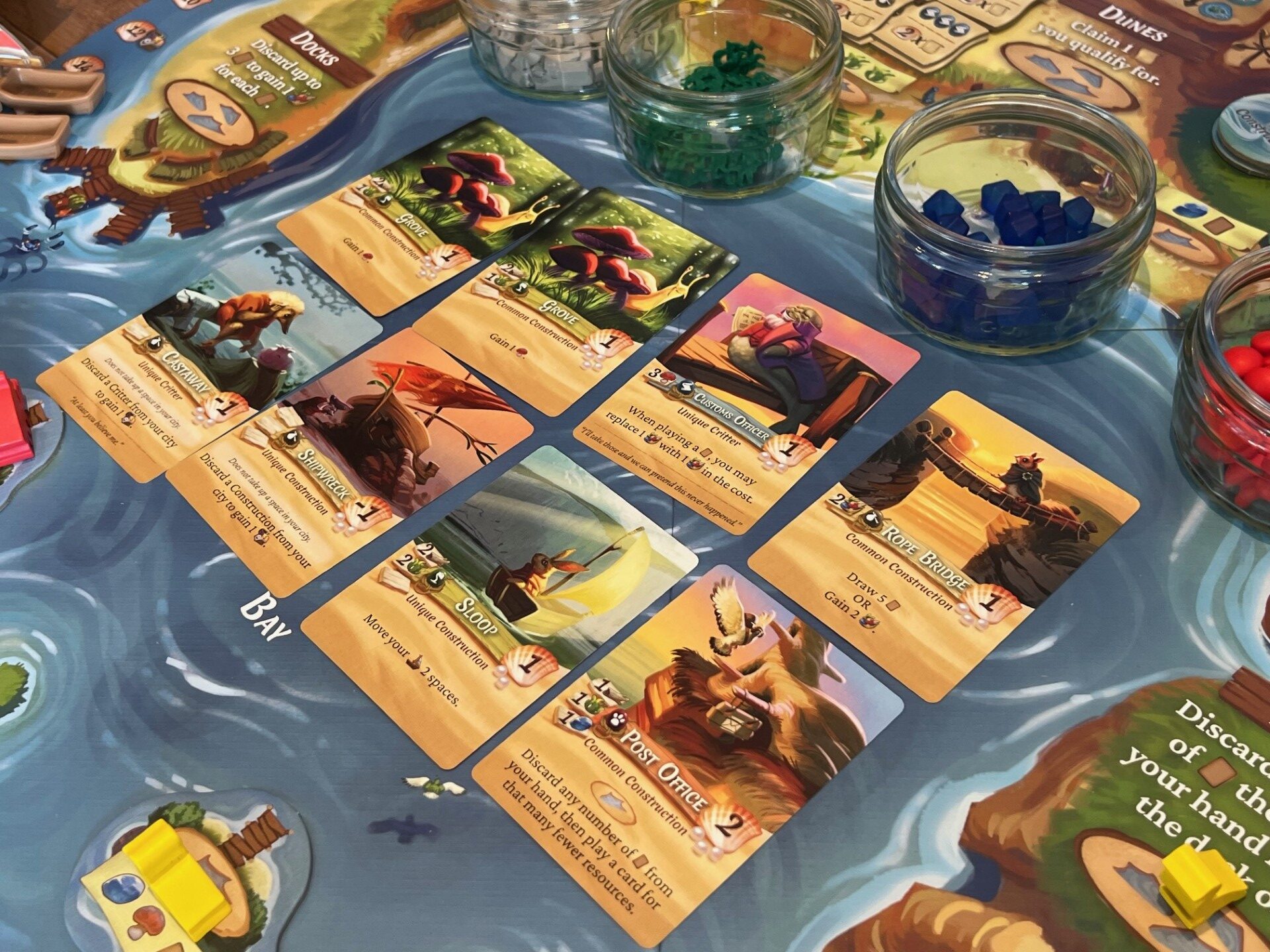
A turn in Farshore consists of taking one of two simple actions — either playing a card, or placing an animeeple. In the first season (or round of turns) each player will have two animeeples, and then with each passing season, players will receive one more. In multiplayer games, this results in a maximum of five animeeples, whilst in solo, you’ll end up with six (having started with three). Players start with a hand of cards based on their position in turn order, but the main thing to note is that your hand limit is always eight cards, and players may play a card directly from the bay — which is a shared market of eight different cards.
This gives players a fairly large number of options at any given time, and in the early game, players will likely use their animeeples to visit spaces on shore where they can gather resources. For example, three wood, two seaweed or mushrooms, or a gem and a card. The game is always set up with a small number of island spaces that disappear after a couple of rounds as the tide comes in — a nice thematic touch that also makes the board much, much tighter at three or four players.
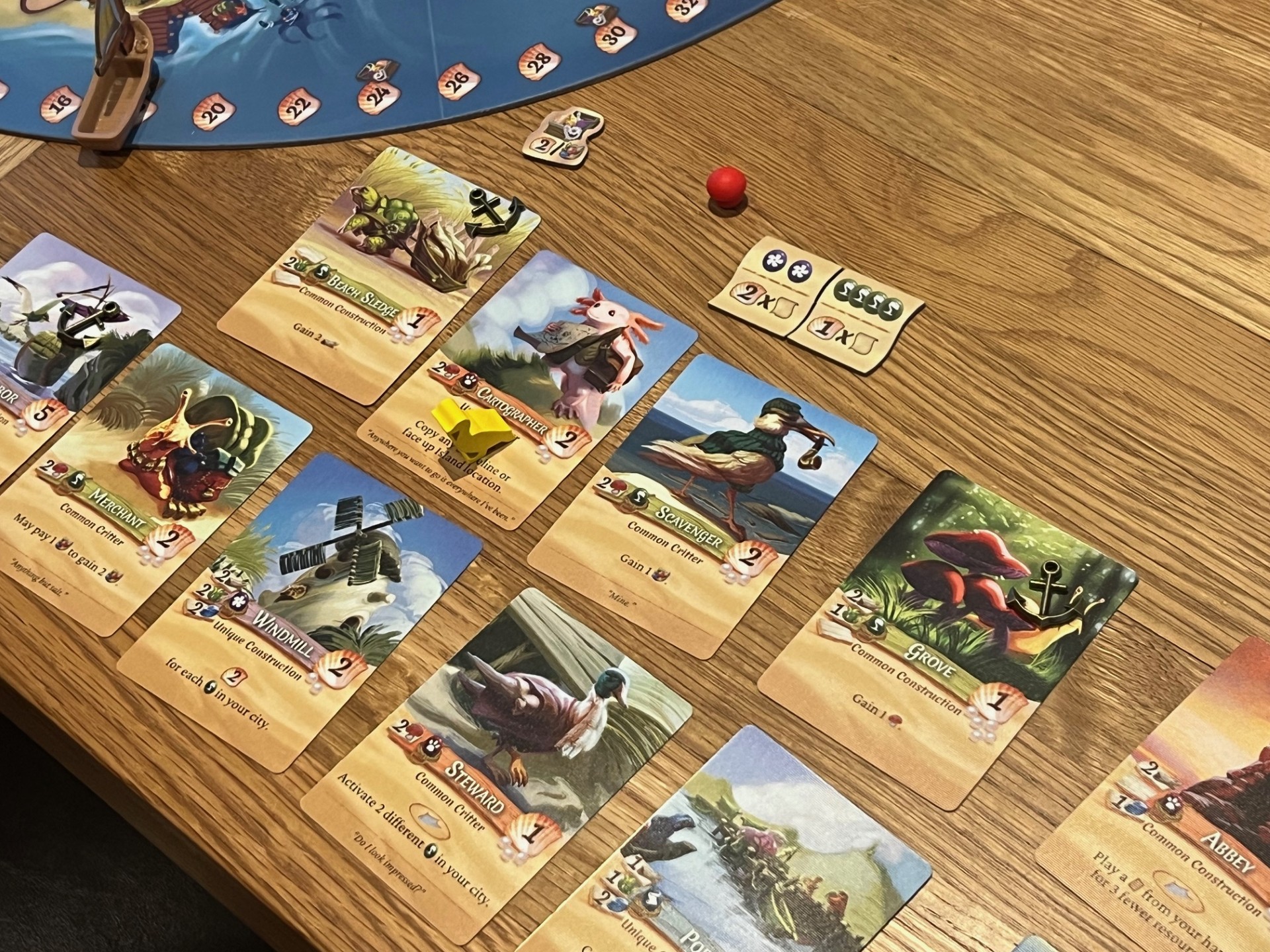
There are also spaces for converting excess cards into resources of your choice and for discarding unwanted cards and then drawing up to your hand limit, and in my opinion, the range of action spaces makes sense whilst keeping the decision space fairly simple. As the game progresses, players may want to use a particular space that allows them to take treasure maps — that award points based on symbols you’ve collected across cards. These decrease in value as more are taken, so whilst I say this is a late game thing, it’s also very powerful mid-game if you can afford to do it.
I say afford to do it because of course you’re collecting resources so that you can take the other action – playing cards. Each player may have up to fifteen cards in their personal tableau, and every single one will score points. Some buildings and character cards can score up to five points on their own, with the average perhaps being around two to three. As in the original game, there are certain characters and locations that will score additional points based on other achievements you’ve made — such as how many unique buildings or characters you have — and can score maybe four or six points in addition to whatever the building itself is worth.
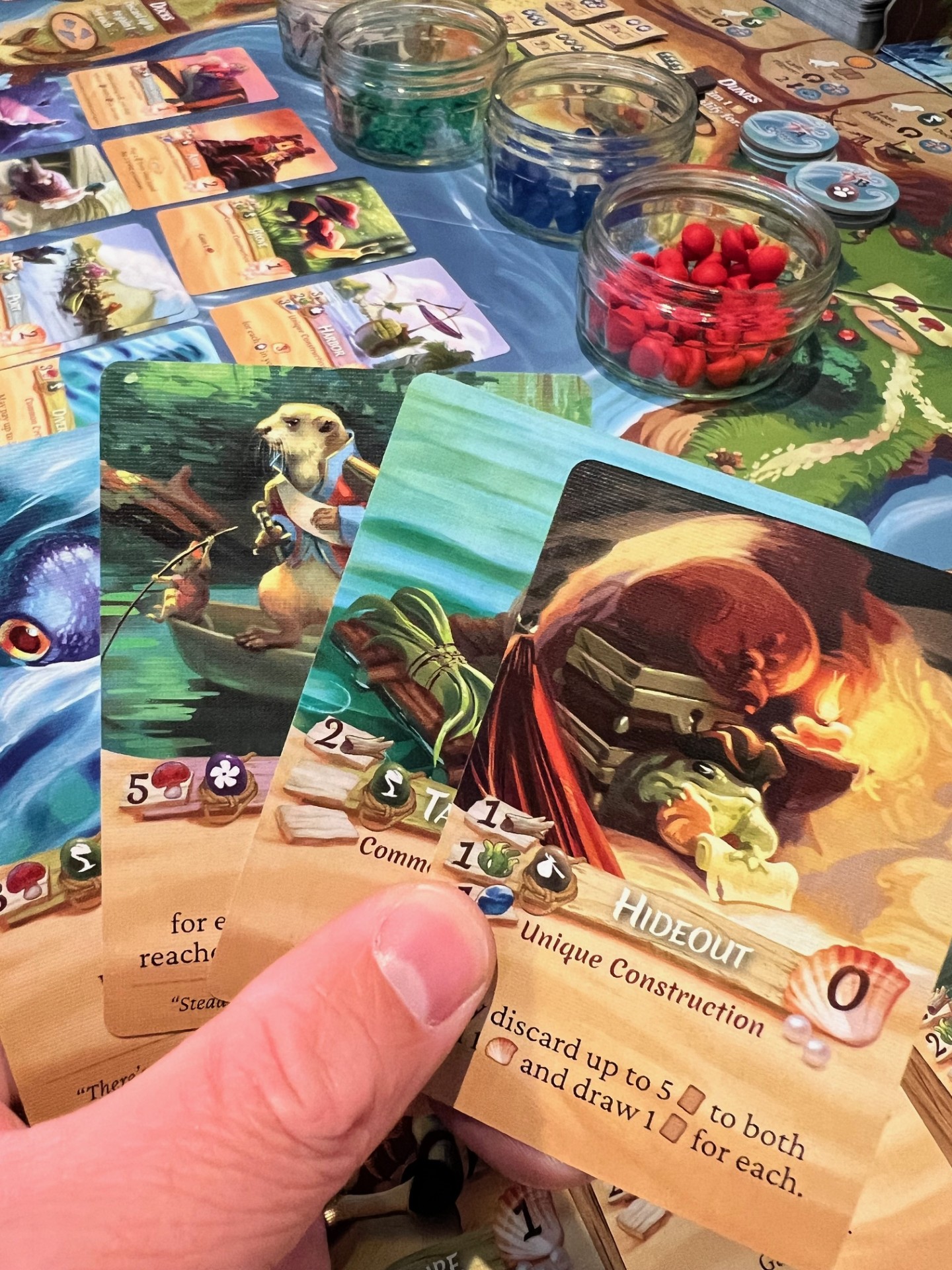
Both location and character cards (called constructions and critters by the in-game language) come in one of five sets — denoted by a small symbol on them. It is these symbols that contribute to the set collection associated with the treasure map space, and this also shows how they will affect the game. Production cards, for example, will provide “something” both when they are played and then again in the second and fourth seasons of the game. Administration cards with a blue symbol denote that their effect will change one of the normal rules — for example by triggering a bonus when a different card is played.
These keywords (construction and critter) and symbols also match two “windrose” tokens that change with every season and when a player places a card that matches one or both of the windrose tokens, they will move a beautifully made plastic ship (complete with cardboard sail) around the edge of the map. Each space the boat moves is worth points, but some also show treasure tokens which will provide two points at the end of the game, or which can be traded for a single resource of any kind whenever the player wishes to.
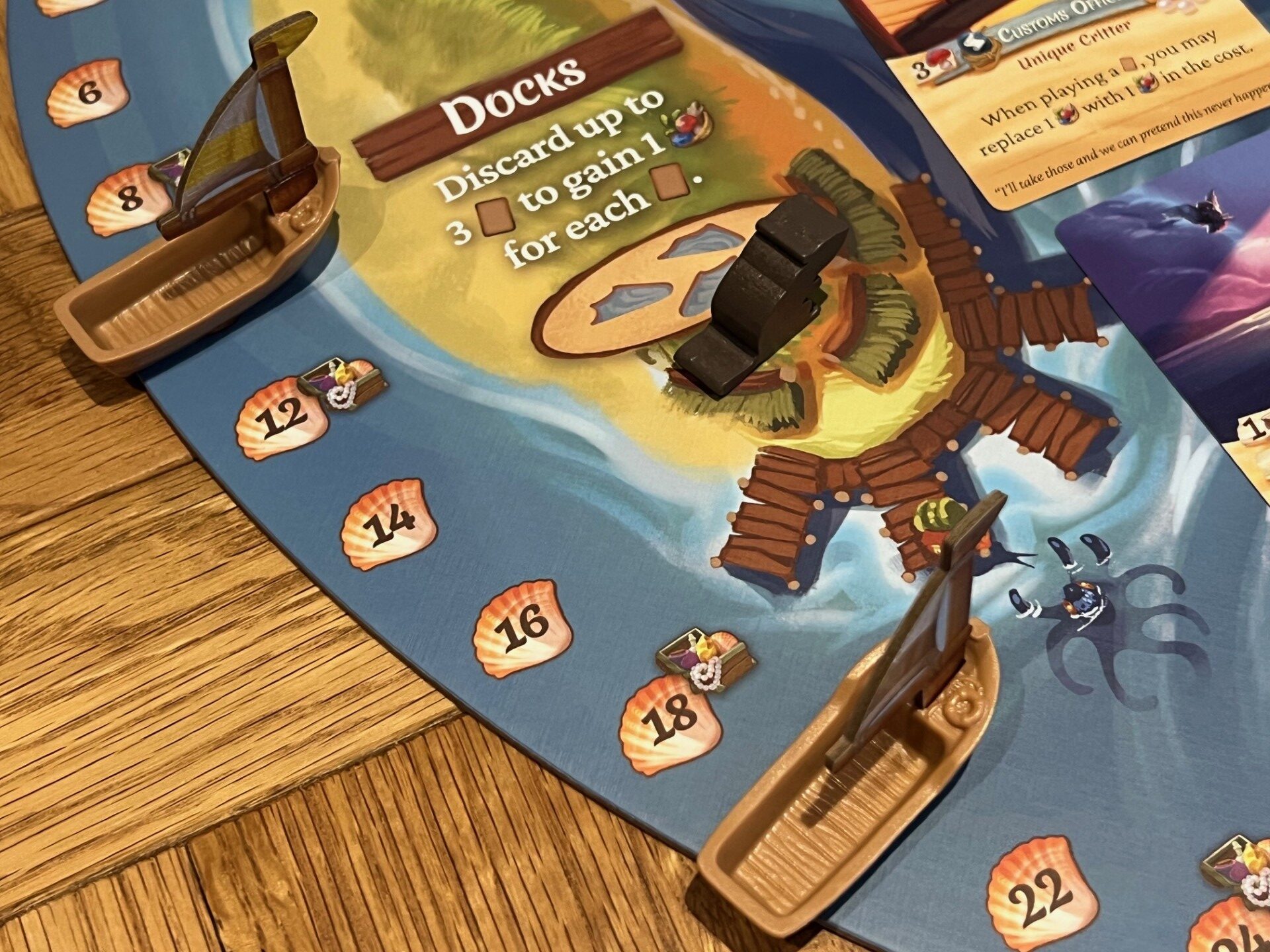
Finally, I mentioned earlier that the occupation mechanic from Everdell had been adjusted in Farshore. Now, instead of having to match two very specific cards in a deck of hundreds, players receive three metal anchor tokens. As a turn, a player may use one of these tokens to place on a construction card they have already built, and then they can immediately play a critter with the same symbol for free. At first I assumed I’d got this wrong as it seems too powerful – but it really is as simple as that, and can regularly save you three or more mushrooms, plus the turn(s) it would have taken to gather them.
For me, Farshore is a cleaner, more straightforward design than Everdell, and somehow that makes it feel less deep than the original game. My children (both under ten) are comfortably playing Farshore, and yet it doesn’t set itself up as a kids game. The scoring in Everdell (as well as some of the rules) are much more complex and perhaps I’d even say fiddly, by comparison, and as a result Farshore feels like a much lighter game when really, it’s just a more streamlined experience with nice, clear scoring.
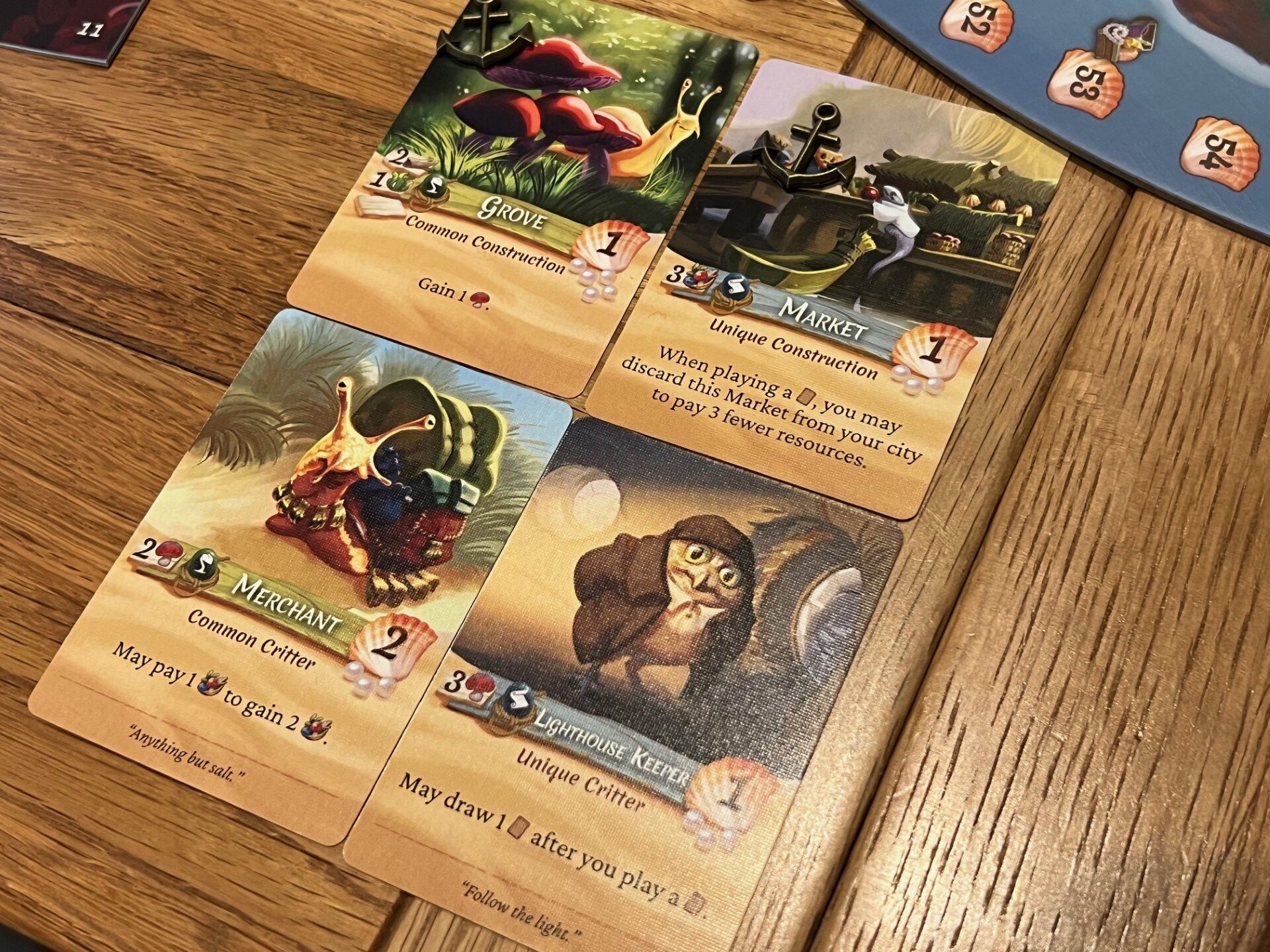
If you already own Everdell, you probably don’t need Farshore, especially if you have already integrated expansions and decided on a favourite setup for the original game. However, if you are new to the series, then I’d start with Farshore — even if you have younger players. Whilst My ‘Lil Everdell is simpler, Farshore is only a little more complex, and yet it offers a lot more big, interesting decisions. If cute critters and tableau building gameplay are your bag, then Farshore is where it’s at for me.
You can find Everdell Farshore on Amazon.
Comments are closed.